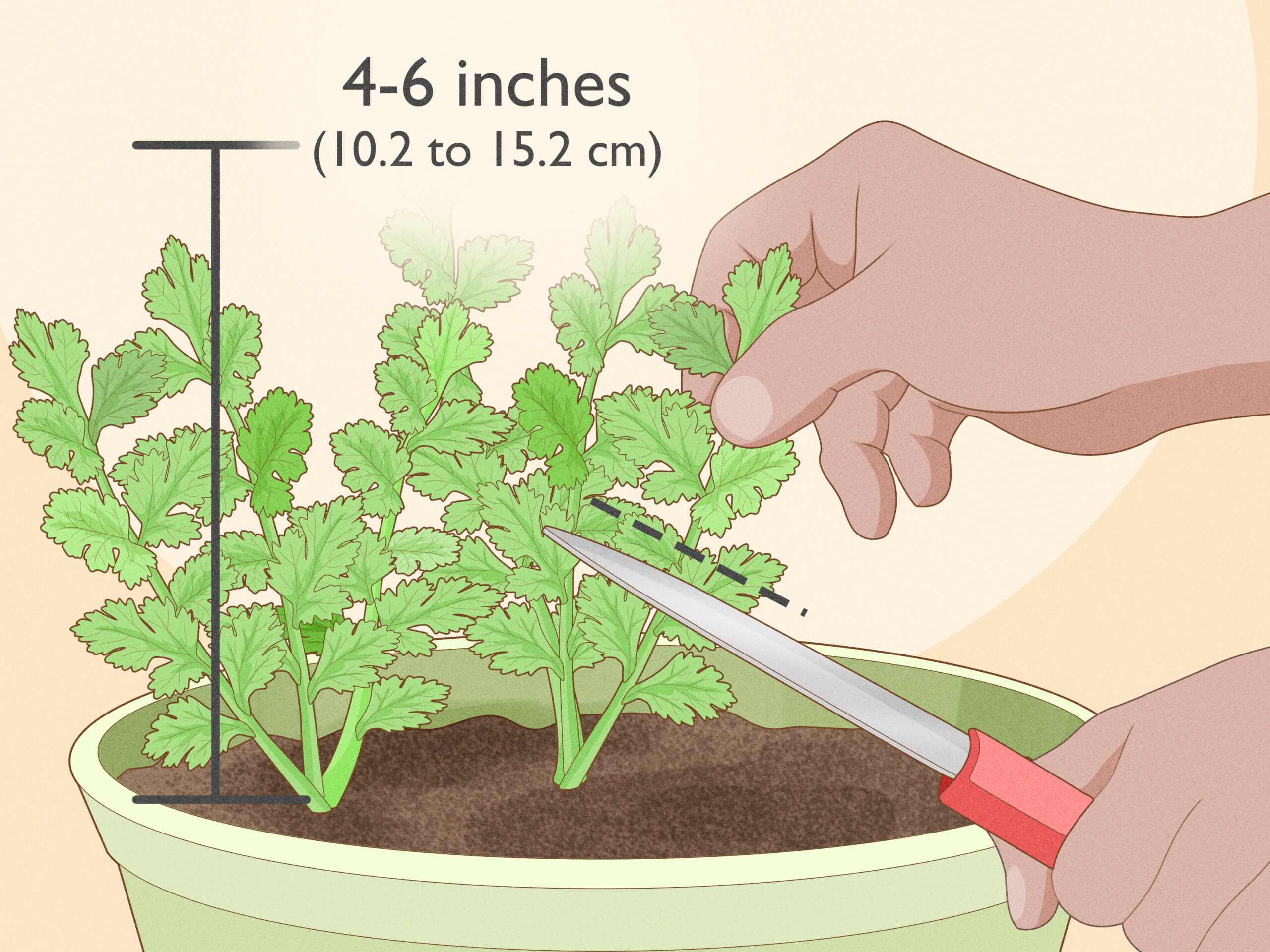Cilantro, with its fresh and tangy flavor profile, is a favorite in kitchens around the world. Learning how to grow cilantro can enhance your culinary experiences and bring a touch of greenery to your space.
Whether you’re a seasoned gardener or a beginner, this guide will walk you through the essential steps for sowing, growing, and harvesting cilantro, ensuring a bountiful and flavorful harvest.
How to grow cilantro for a steady supply of fresh herbs
Growing cilantro continuously requires strategic planting and maintenance. To achieve a steady supply, start by sowing seeds every few weeks. This succession planting ensures that as one crop matures, another is developing.
Choose a location with ample sunlight and well-draining soil, which are crucial for cilantro’s growth. Consider using containers if space is limited, and remember to keep the soil moist but not waterlogged.
Harvest leaves regularly to encourage bushier growth, and if you notice any signs of the plants bolting, snip the emerging flower stalks to prolong leaf production.

How to sow cilantro seeds outdoors
- Start by selecting a sunny spot with fertile, well-drained soil.
- Scatter the seeds lightly on the soil surface and cover them with a thin layer of soil.
- Water gently and keep the soil moist until germination occurs.
- Thin out the seedlings to prevent overcrowding, which can lead to disease and poor growth.
How to grow cilantro indoors
For those with limited outdoor space, growing cilantro indoors is a great alternative. Use a deep pot with drainage holes to accommodate the long taproot, and place it in a sunny window or under grow lights.
Maintain a consistent watering schedule, allowing the top inch of soil to dry out between waterings. Rotate the pot regularly to ensure even growth, and fertilize with a half-strength liquid fertilizer every month.
By maintaining the right conditions, you can enjoy fresh cilantro leaves without ever stepping outside.
How to grow cilantro from cuttings
Growing cilantro from cuttings is a simple and effective way to propagate this herb. Select healthy, non-bolting stems and cut a section about 4-6 inches long, just below a leaf node.
Remove the lower leaves and place the cuttings in a glass of water. Change the water every few days to keep it fresh. Once the roots have developed, transplant the cuttings into soil and care for them as you would seed-grown plants.

How to harvest cilantro for best flavor
For the best flavor, harvest cilantro in the morning when its essential oils are at their peak. Snip the leaves close to the stem, and be careful not to remove more than one-third of the plant at a time to ensure continuous growth.
Use the leaves fresh for the most potent flavor or store them in the refrigerator wrapped in a damp paper towel. To preserve cilantro longer, consider drying or freezing the leaves.
When to plant cilantro for optimal growth
Timing is key for optimal growth. Plant cilantro in the spring after the last frost, or in the fall if you live in a warmer climate. Cilantro thrives in cooler temperatures, so avoid planting during the hot summer months to prevent bolting.
With proper timing, you can enjoy homegrown cilantro during the cooler parts of the growing season.
Best cilantro varieties to try at home
Several cilantro varieties are well-suited for home gardens. ‘Slow Bolt’ is ideal for those looking to delay bolting, while ‘Santo’ is known for its robust flavor.

‘Leisure’ is another popular choice that is less prone to bolting and offers a higher yield. Experiment with different varieties to discover which one grows best in your conditions and suits your taste preferences.
Related Questions on Growing Cilantro
How do you grow cilantro without it bolting?
To prevent cilantro from bolting, choose bolt-resistant varieties and provide consistent moisture. Shading plants during the hottest part of the day can also help, as can mulching to keep the roots cool.
Additionally, harvesting leaves frequently encourages new growth and can delay flowering, extending the leaf production period.
How do you keep cilantro alive?
Keeping cilantro alive and thriving requires proper sunlight, watering, and soil conditions. Ensure it receives 4-6 hours of sunlight daily, keep the soil consistently moist, and use well-draining soil to prevent root rot.
Regular harvesting can also promote vitality and prevent the plant from becoming leggy or bolting prematurely.

When to harvest cilantro?
The best time to harvest cilantro is when the plants are 4-6 inches tall. This typically occurs 3-4 weeks after planting. Harvest in the morning for the most intense flavor, and avoid waiting too long, as older leaves can become less palatable.
How to grow cilantro indoors and outdoors?
Whether indoors or outdoors, cilantro requires similar care. Provide plenty of light, consistent watering, and fertile soil. Indoors, use a quality potting mix and place the pot in a south-facing window or under grow lights.
Outdoors, select a sunny location and use a well-draining garden bed or container. Regularly check for pests and diseases, which can be more prevalent indoors.
What are the best cilantro varieties to try?
Among the best cilantro varieties to try are ‘Slow Bolt’, ‘Santo’, and ‘Leisure’, each offering specific growth traits like slow bolting or higher yields. Local nurseries may also have recommendations tailored to your region’s climate and conditions.
Cilantro is not only a flavorful addition to dishes but also a versatile and easy-to-grow herb. With the tips provided, you can cultivate cilantro successfully and enjoy its fresh taste throughout the growing season. Check out this informative video for more visual guidance on cultivating cilantro:

Growing cilantro at home is a rewarding experience that can bring fresh flavors to your table. Remember to follow the tips on sowing, caring, and harvesting to ensure a steady supply of this versatile herb.
 Milkweed care and growing guide: expert tips for success
Milkweed care and growing guide: expert tips for success
